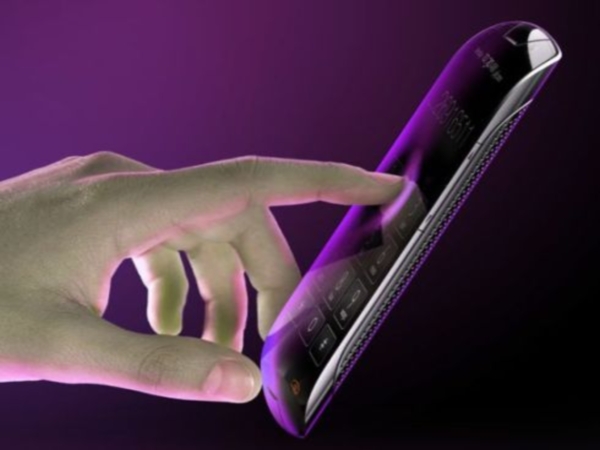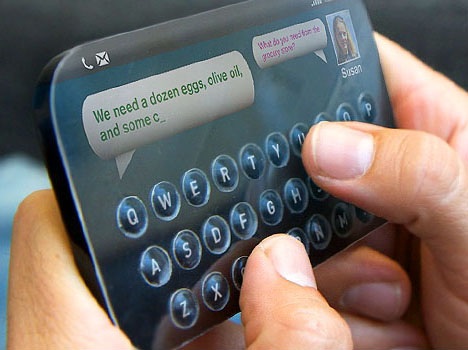4 Cool New Haptic Feedback and Touchscreen Technologies
Humans are a touchy bunch of animals. We become instantly addicted the moment our mothers cradle us for the first time. As children we discover the world using touch. As adults, we touch our spouses, our children, our family members and friends to show our affection. We expect something in return, some type of feedback letting us know that the message was received.
That said, we've become dependent on haptic technology through the years, experiencing tactile feedback through our game consoles, our tablets and our smartphones. This mechanical stimulation makes gadgets more personal, a bit more intelligent than they really are. Current and future haptic technologies will make our bond to gadgets even more personal, turning what was considered science fiction into a daily routine.
Fujitsu Laboratories
First up is Fujitsu Lab's tactile solution, which uses ultrasonic vibrations to convey tactile sensations by varying the friction between the touchscreen display and the user's finger. By inducing an ultrasonic vibration on the surface of a touchscreen, a high-pressure layer of air is created between the screen's surface and the user's fingertip. This method reduces friction, thus creating a floating effect.
Presumably, this effect would drain a device's battery, but that's not the case here, as the lab reports that it has developed a technology that induces vibrations efficiently at mobile device sizes. For the sensation of roughness, Fujitsu Labs' tech rapidly cycles between high and low friction in response to touch information on the panel and the screen's display information.
Fujitsu and Fujitsu Laboratories are continuing with R&D to extend the range of tactile expressiveness, with the goal of commercialization in fiscal 2015.
Read more: Fujitsu Made a Haptic Sensory Prototype Tablet
Vivitouch 4D Sound
For this solution, the company uses Electroactive Polymer technology to print electrodes on an extremely thin piece of polymer film invented by the company. This film, which will move when current is applied, is inserted into an actuator module that in turn is integrated into an on-the-ear or over-the-ear headphones. This film responds to sound in real time, emoting a physical sensation that can be felt through the sensitive skin surrounding the listener's ear.
Get Tom's Hardware's best news and in-depth reviews, straight to your inbox.
Using this method means a faster response time with less power draw when compared to using motors for feedback. This method also means that the physical sensation allows for a richer sound impact without the need to raise the volume to ear-damaging levels. The solution also puts absolutely no pressure on the ear drum, uses only minimal battery power, doesn't add any detectible weight and operates silently even though it moves right next to the ear.
Vivitouch is already licensing this technology to Mad Catz and Ableplanet.
Read more: Vivitouch Haptic Feedback Gives You More Immersive Sound
Tactus Technology
This company's tactile method uses a special layer that replaces the top-most layer (window, cover lens) in a tablet's optical stack, and matches the thickness of the previous tablet component. Sitting above the touch sensor, this patented "Tactile Layer" uses microfluidics, which are small fluid channels that are routed throughout the layer. This fluid will expand the top polymer layer to create physical buttons. A small Tactile Controller is connected to the Tactile Layer, which controls the state of the buttons.
Thanks to this technology, users can push and type or rest their fingers on the liquid-based buttons just like they do with a physical button or keyboard. And when the buttons are disabled – such as when the user is done typing in a Website URL – the buttons recede back into the screen. There is no evidence that they ever existed: the tablet will have a smooth, seamless flat touch-screen with maximum viewing area.
The company is already licensing this technology to unnamed OEM and ODM partners.
Read more: World's First Tablet That Can Grow Lumpy Keys Revealed
Immersion
Finally, we have Immersion's TouchSense technology, which has been around for quite a while providing haptics in mobile phone, automotive, gaming, medical and consumer electronics products. The 3000 series is for use with single-actuator haptics, the 4000 series for multi-actuator haptics, and the 5000 series that leverages the piezo actuator for high-definition haptics. This company was founded in 1993, and worked with Microsoft in 1997 to integrate its tech into the DirectInput API for DirectX 5.0.

Kevin Parrish has over a decade of experience as a writer, editor, and product tester. His work focused on computer hardware, networking equipment, smartphones, tablets, gaming consoles, and other internet-connected devices. His work has appeared in Tom's Hardware, Tom's Guide, Maximum PC, Digital Trends, Android Authority, How-To Geek, Lifewire, and others.
-
smeezekitty Replywe touch our spouses, our children, our family members
That sounded just a little bit creepy
Anyway I am typing this on my tablet with Baltic haptic feedback turned off
I really do not need it and right now it needs to be quiet
--edit--
Line breaks fixed and autocorrect -
lpedraja2002 I remember seeing the Tactus technology on a previous article here on CES but they showed more extreme examples and I think they made a face with it and it scared the crap out of me haha. I'm already used to smartphones but at the beginning I wished I could feel the keys being pressed.Reply -
RedJaron I really like the thought of the Tactus tech. Would be really nice to have on phones and tablets.Reply -
f-14 i don't want textured feeling feedback, i want voice command, my hands can be used to actually do something productive instead of wasting time and energy typing or pointing causing repetitive stress injury and arthritis.anything else involved with touch is a waste of time money and energy.Reply




